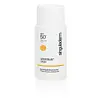What's inside
What's inside
 Key Ingredients
Key Ingredients

 Benefits
Benefits

 Concerns
Concerns

 Ingredients Side-by-side
Ingredients Side-by-side

Water
Skin ConditioningButylene Glycol
HumectantEthylhexyl Methoxycinnamate
UV AbsorberButyl Methoxydibenzoylmethane
UV AbsorberDimethicone
EmollientEthylhexyl Salicylate
UV AbsorberCellulose Acetate
Octocrylene
UV AbsorberTitanium Dioxide
Cosmetic ColorantAcetyl Tetrapeptide-2
Skin ConditioningPhenoxyethanol
PreservativeCellulose Acetate Butyrate
Acrylates/C10-30 Alkyl Acrylate Crosspolymer
Emulsion StabilisingPhospholipids
Skin ConditioningDisodium EDTA
Ethylhexylglycerin
Skin ConditioningParfum
MaskingPropylene Glycol Stearate
Skin ConditioningGlycerin
HumectantCaprylyl Glycol
EmollientWater, Butylene Glycol, Ethylhexyl Methoxycinnamate, Butyl Methoxydibenzoylmethane, Dimethicone, Ethylhexyl Salicylate, Cellulose Acetate, Octocrylene, Titanium Dioxide, Acetyl Tetrapeptide-2, Phenoxyethanol, Cellulose Acetate Butyrate, Acrylates/C10-30 Alkyl Acrylate Crosspolymer, Phospholipids, Disodium EDTA, Ethylhexylglycerin, Parfum, Propylene Glycol Stearate, Glycerin, Caprylyl Glycol
Water
Skin ConditioningEthylhexyl Salicylate
UV AbsorberDiethylamino Hydroxybenzoyl Hexyl Benzoate
UV FilterBis-Ethylhexyloxyphenol Methoxyphenyl Triazine
Skin ConditioningCoco-Caprylate
EmollientButylene Glycol
HumectantDimethicone
EmollientDicaprylyl Carbonate
EmollientEthylhexyl Triazone
UV AbsorberDibutyl Adipate
EmollientTriacontanyl Pvp
HumectantPoloxamer 407
EmulsifyingGlycerin
HumectantIllite
AbrasiveNiacinamide
SmoothingAcrylates/C12-22 Alkyl Methacrylate Copolymer
Caprylyl Glycol
EmollientTocopheryl Acetate
AntioxidantPotassium Cetyl Phosphate
EmulsifyingSodium Carboxymethyl Beta-Glucan
CleansingCarnosine
Skin ConditioningButyrospermum Parkii Butter
Skin ConditioningDimethicone/Vinyl Dimethicone Crosspolymer
Skin ConditioningPPG-12/Smdi Copolymer
EmollientSodium Polyacrylate
AbsorbentPanthenol
Skin ConditioningAllantoin
Skin ConditioningArginine
MaskingCaprylhydroxamic Acid
Coco-Glucoside
CleansingDisodium Lauryl Sulfosuccinate
CleansingPentylene Glycol
Skin ConditioningTocopherol
AntioxidantTrisodium Ethylenediamine Disuccinate
Water, Ethylhexyl Salicylate, Diethylamino Hydroxybenzoyl Hexyl Benzoate, Bis-Ethylhexyloxyphenol Methoxyphenyl Triazine, Coco-Caprylate, Butylene Glycol, Dimethicone, Dicaprylyl Carbonate, Ethylhexyl Triazone, Dibutyl Adipate, Triacontanyl Pvp, Poloxamer 407, Glycerin, Illite, Niacinamide, Acrylates/C12-22 Alkyl Methacrylate Copolymer, Caprylyl Glycol, Tocopheryl Acetate, Potassium Cetyl Phosphate, Sodium Carboxymethyl Beta-Glucan, Carnosine, Butyrospermum Parkii Butter, Dimethicone/Vinyl Dimethicone Crosspolymer, PPG-12/Smdi Copolymer, Sodium Polyacrylate, Panthenol, Allantoin, Arginine, Caprylhydroxamic Acid, Coco-Glucoside, Disodium Lauryl Sulfosuccinate, Pentylene Glycol, Tocopherol, Trisodium Ethylenediamine Disuccinate
Ingredients Explained
These ingredients are found in both products.
Ingredients higher up in an ingredient list are typically present in a larger amount.
Butylene Glycol (or BG) is used within cosmetic products for a few different reasons:
Overall, Butylene Glycol is a safe and well-rounded ingredient that works well with other ingredients.
Though this ingredient works well with most skin types, some people with sensitive skin may experience a reaction such as allergic rashes, closed comedones, or itchiness.
Learn more about Butylene GlycolCaprylyl Glycol is a humectant and emollient, meaning it attracts and preserves moisture.
It is a common ingredient in many products, especially those designed to hydrate skin. The primary benefits are retaining moisture, skin softening, and promoting a healthy skin barrier.
Though Caprylyl Glycol is an alcohol derived from fatty acids, it is not the kind that can dry out skin.
This ingredient is also used as a preservative to extend the life of products. It has slight antimicrobial properties.
Learn more about Caprylyl GlycolDimethicone is a type of synthetic silicone created from natural materials such as quartz.
What it does:
Dimethicone comes in different viscosities:
Depending on the viscosity, dimethicone has different properties.
Ingredients lists don't always show which type is used, so we recommend reaching out to the brand if you have questions about the viscosity.
This ingredient is unlikely to cause irritation because it does not get absorbed into skin. However, people with silicone allergies should be careful about using this ingredient.
Note: Dimethicone may contribute to pilling. This is because it is not oil or water soluble, so pilling may occur when layered with products. When mixed with heavy oils in a formula, the outcome is also quite greasy.
Learn more about DimethiconeEthylhexyl Salicylate is an organic compound used to block UV rays. It primarily absorbs UVB rays but offers a small amount of UVA protection as well.
Commonly found in sunscreens, Ethylhexyl Salicylate is created from salicylic acid and 2-ethylhexanol. You might know salicylic acid as the effective acne fighter ingredient and BHA.
The ethylhexanol in this ingredient is a fatty alcohol and helps hydrate your skin, similar to oils. It is an emollient, which means it traps moisture into the skin.
According to manufacturers, Ethylhexyl Salicylate absorbs UV wavelength of 295-315 nm, with a peak absorption at 307-310 nm. UVA rays are linked to long term skin damage, such as hyperpigmentation. UVB rays emit more energy and are capable of damaging our DNA. UVB rays cause sunburn.
Learn more about Ethylhexyl SalicylateGlycerin is already naturally found in your skin. It helps moisturize and protect your skin.
A study from 2016 found glycerin to be more effective as a humectant than AHAs and hyaluronic acid.
As a humectant, it helps the skin stay hydrated by pulling moisture to your skin. The low molecular weight of glycerin allows it to pull moisture into the deeper layers of your skin.
Hydrated skin improves your skin barrier; Your skin barrier helps protect against irritants and bacteria.
Glycerin has also been found to have antimicrobial and antiviral properties. Due to these properties, glycerin is often used in wound and burn treatments.
In cosmetics, glycerin is usually derived from plants such as soybean or palm. However, it can also be sourced from animals, such as tallow or animal fat.
This ingredient is organic, colorless, odorless, and non-toxic.
Glycerin is the name for this ingredient in American English. British English uses Glycerol/Glycerine.
Learn more about GlycerinWater. It's the most common cosmetic ingredient of all. You'll usually see it at the top of ingredient lists, meaning that it makes up the largest part of the product.
So why is it so popular? Water most often acts as a solvent - this means that it helps dissolve other ingredients into the formulation.
You'll also recognize water as that liquid we all need to stay alive. If you see this, drink a glass of water. Stay hydrated!
Learn more about Water